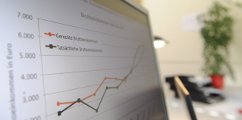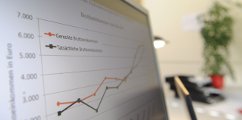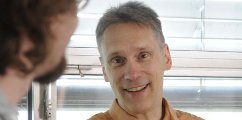Project A4
- Dawid, Herbert, Prof. Dr.
- Head of Project A4
- Harting, Philipp, Dr.
- Research associate Project A4
- van der Hoog, Sander, J.-Prof. Dr.
- Research associate Project A4
The goal of this project is to broaden and deepen our understanding of how technological progress influences various mechanisms that transform heterogeneities in formal qualification (general skills) into inequalities in pay. It accords particular attention to the differing dynamics of specific (nonobservable) skills.
The project studies this issue by developing an empirically founded, agent-based simulation model of a closed economy, allowing explicit modeling of the interaction between heterogeneous individuals under different institutional conditions and explaining aspects of economic dynamics, such as technological progress, as endogenous phenomena. The key facets of the concrete mechanisms to be observed in the simulation model are: (a) the enhancement of specific skills through dealing with technologies in the workplace (learning process), (b) feedback effects between the employee's general/specific skills and the employer's choice of technology, and (c) the transfer of information about jobs through social networks (social closure).
By using the simulation model, it is possible, in a first step, to analyze whether and how far various assumptions about technological progress influence these mechanisms, and thus to investigate the effect of heterogeneity in formal qualification on pay inequalities. One important point here is that the closed nature of the simulation model makes it possible to identify chains of effects that arise from feedback between various sectors of the economy. In a second step, the project will study the effects of various interventions by economic policy makers and institutions on the income dynamics of different skill groups.
The special benefits of this approach are twofold. The first is that the effect of three aspects on the genesis of pay inequalities can be analyzed simultaneously: endogenous technological progress; the endogenously generated, vertically differentiated labor demand and supply, and institutional interventions. This brings together analyses that have previously been conducted in isolation, and offers the opportunity to study feedback effects between the variables. The second benefit is that this approach can be expanded successively to cover a 12-year period. The goal is to endogenize the heterogeneities in formal qualification and thereby model and analyze their emergence. This makes it necessary to take a cross-generational view.
9 Publications
Dawid H, Gemkow S (2014)
Industrial and Corporate Change 23(5): 1171-1200.
Dawid H, Harting P, Neugart M (2014) SFB 882 Working Paper Series; 34.
Bielefeld: DFG Research Center (SFB) 882 From Heterogeneities to Inequalities.
Dawid H, Harting P (2012)
In: Applied Evolutionary Economics, Behavior and Organizations. Bünstorf G (Ed); Edward-Elgar: 103-130.
Dawid H, Gemkow S, Harting P, Neugart M (2012)
Journal of Evolutionary Economics 22(3): 543-562.
Dawid H, Reimann M (2011)
Journal of Evolutionary Economics 21(2): 191-229.
Gemkow S, Neugart M (2011)
Journal of Evolutionary Economics 21(4): 703-719.
Arifovic J, Dawid H, Deissenberg C, Kostyshyna O (2010)
Journal of Economic Dynamics and Control 34(9): 1768-1790.
Dawid H, Neugart M (2010)
Eastern Economic Journal 37: 44-50.
Dawid H, Gemkow S, Harting P, Neugart M (2009)
Journal of Artificial Societies and Social Simulation 12(4).












